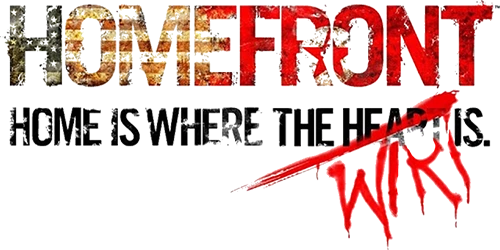The Philadelphia uprising was an armed uprising against the North Korean occupation of the United States in which it occurred in Philadelphia.
Background[]
The Resistance began their opposition to KPA rule in 2027. The brutal fighting lasted until the Resistance were routed by superior KPA weaponry and what remained of their forces were forced into hiding in the ruined parts of Philadelphia. The unprecedented rebellion caused the KPA to enforced a strict occupation of the city in which civilians that are caught sheltering Resistance members are punished by death.
Uprising[]
The Resistance led by Jack Parrish spent their efforts in rescuing Benjamin Walker, the leader of the national Resistance movement, from the KPA while causing enough dissent in the city's three zones. Their attempt to rescue Walker became their own undoing as they were led into a trap in Independence Hall, where Walker was suppose to being put on trial by the KPA, and the KPA launched a series of attacks on Resistance outposts in Philadelphia due to the work of their undercover collaborator, James Crawford.
The Resistance was almost wiped out following the attacks. However, the Resistance make their retaliation against Mayor William Simpson in which they cause a prison uprising and recruited convicts to assault City Hall and capturing Simpson. Although Parrish intended on forcing Simpson to read a message denouncing the KPA occupation on national TV, but Simpson was murdered by Dana Moore. This forced a desperate Parrish to make his own speech urging the American people to rise up against the KPA. Parrish's speech, despite lacking Walker's eloquence, succeeded in spurring the people of Philadelphia to rebel.
However, the death of Simpson and the open rebellion was met with the KPA deciding to unleashing nerve gas upon the city - a contingency policy that the KPA had previously done with other cities that fell into rebellion. The KPA released the toxin from KPA Airships, which are protected by a swarm of Duster drones and preventing Surface-to-Air missiles from shooting the airships. Before the city was close to being completely gassed, the Resistance stormed Independence Hall, where the drone control station controlling the Duster drones are located. Many Resistance fighters were killed, including Dana Moore, in the assault, but managed to shut down the control station and allowing the Resistance to shoot down the airships.
Aftermath[]
The Resistance succeeded in saving Philadelphia and capturing the city from the KPA. The uprising encouraged further resistance in other cities. However, in the weeks that followed, the KPA recovered from their losses and brutally crushed the Resistance movement, which were unable to actually oppose their more technologically advanced enemy. Each Resistance-held city were crushed until the Philadelphia Resistance became the last Resistance cell. Although the Resistance movement was almost destroyed, NATO ultimately decided to declare war on the KPA and bringing an invasion force on North Korean-occupied America.[1]
Trivia[]
- It is strongly possible that the Philadelphia Uprising might be a throwback to the American Revolution.
